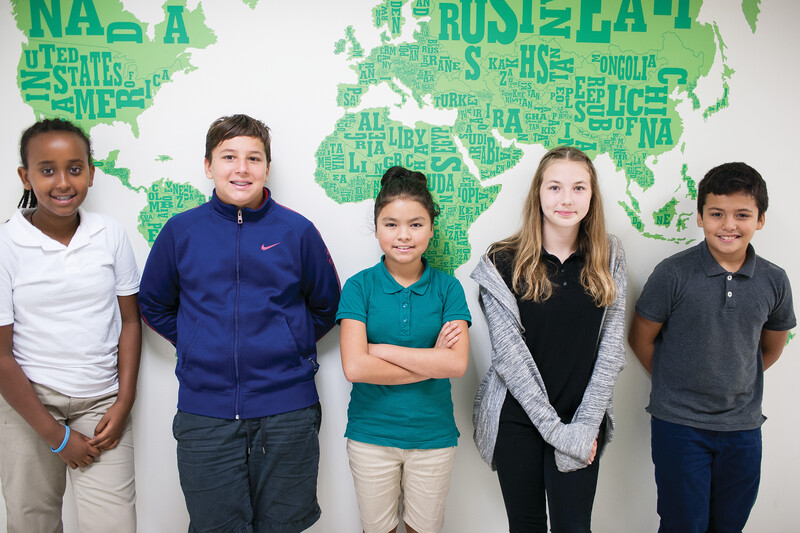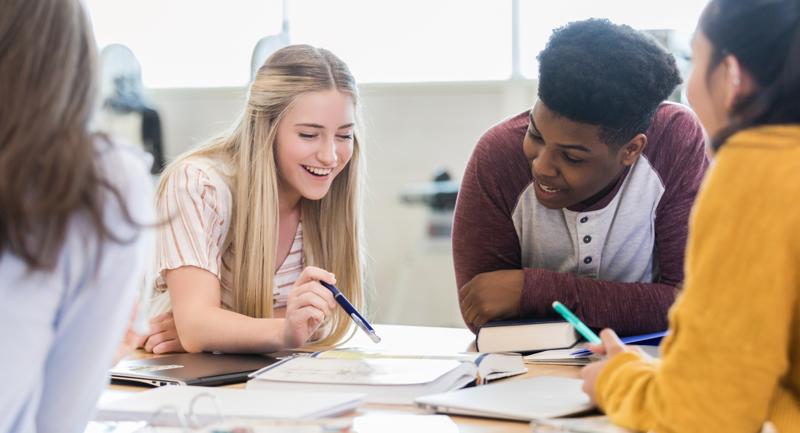Our public charter school in Washington, D.C., has "international" in its name and cultural competence in its mission statement. But it's not just the classes in Chinese, French, and Spanish or trips to embassies that prepare students to take on the world.
Instead, the journey to global readiness begins the first week of 6th grade—when students bring objects from home to share with classmates while sitting in a circle in their advisory class. This is their contribution to a cross-cultural garden. Students explain their objects to highlight an aspect of their culture and then place the artifacts in the middle of the circle. In this activity, originally suggested by Debra Rader and Linda Harris Sittig (2003), students' home cultures literally come to school.
Although the activity is about recognizing and appreciating differences, the most powerful effect doesn't come from students seeing their classmates' cultural objects. It comes in displaying and explaining their own. It's that ability—and requirement—to voice their own culture that really starts students toward global readiness.
Finding a Way In
DC International School is about 40 percent black, 40 percent Hispanic, and 20 percent white and Asian. More than half of our students receive free or reduced-price lunch. We currently serve more than 500 students in grades 6–9.
In the rhetoric of many urban school reformers, education is a way out. I would argue that the best way out for students is actually in—going inside to understand their culture and to understand themselves as cultured. There is precedent for this path. Advocates of culturally competent pedagogy for black students have long called for "the ability to link principles of learning with deep understanding of (and appreciation for) culture," which treats "students as subjects rather than objects" (Ladson-Billings, 2014). Students can't learn if they need to leave themselves behind.
Many other charter schools that educate students like ours are proudly assimilationist. They serve students by preparing them to enter a more rarified world. Students are expected to code-switch when they walk in the door, to identify themselves by a college-named homeroom rather than their actual home, to dress and walk and speak and act according to an Ivy League model of college prep-ness. But assimilation as a goal is both false and insufficient—false, because it presumes assimilation into an elite that has become less relevant in the 21st century, and insufficient, because we want our students to continue pushing cultural progress.
We, too, teach a college-prep curriculum, but we also want to prepare students for college diversity, even for college in another country if they choose. Beyond college, we want to prepare students for a world of many cultures—and to contribute to a world in which those cultures are preserved, valued, and built upon.
Creating a Culture of Cultures
We start from a place of cultural positivity. We believe all cultures are interesting, worthwhile, and powerful. When a student's family is from El Salvador, we want that culture to be part of our school culture. When a student's family has lived in a poor neighborhood of D.C. for five generations, we want that culture, too. We want to see the crucifix, the black history flash cards, the book in Amharic, and the national soccer T-shirt. The message to students is this: You can bring your whole self to this school. You can bring who you are on this educational journey. You don't have to leave your family or culture behind.
We want our students of color to feel less of the divided self—the tension between home and school that has afflicted students asked to assimilate into a perceived "mainstream" society (Perry, Steele, & Hilliard, 2003). They are valued for who they are as well as for what they can become—and the buy-in from students and their families is enormous.
English language learners are not perceived as deficient at our school because everyone is a language learner. Given that language is a crucial part of both culture and global readiness, every student studies Chinese, French, or Spanish. We've also had students do independent studies on languages that their families speak, including Quechua, German, and Hebrew. As their interests become more international, our students simultaneously become more interested in their own backgrounds.
The message of cultural positivity is just as important, though in different ways, for students who are not from historically disadvantaged backgrounds. For white students, part of the message is that you, too, come from somewhere. Even if you're not from another country, there is a cultural specificity to you as well. Maybe it's the pickles your aunt makes. Maybe it's a baseball cap from your father's hometown.
We are teaching students—in fact, they are teaching one another and themselves—that everyone has a culture, and that these cultures can sit together in a circle, like one garden with many flowers. When they go out into the world, our students will need to appreciate the extraordinary range of cultures, and be both aware of and positive about the fact that they, too, bring their own.
Where Cultures Meet
Not every school has "international" in its name or a focus on language learning. But in a diverse society and with students heading for a fully globalized future, every school can—and should—be a culturally positive school. These tips can get you started:
Structure ways for staff, students, and families to bring in their cultures early in the school year. Every stakeholder wonders, consciously or subconsciously, "Is this place for me?" Members of historically disenfranchised groups especially wonder, "Is this place for someone like me?"At our school, incoming students write their summer essays about what they will bring to the learning community—how they will add what they have to our school culture. We also begin our language classes with units on identity: What are the identities of people who speak this language? How does language communicate identity? How does your own identity connect to what we're talking about, and how does the language you study add to your identity?
Take individualized (rather than broad) approaches to cultural celebrations. We ensure that students participate in more person-to-person interactions and fewer prepackaged heritage month celebrations. With this approach, students can answer the question, "Do I define myself, or do others get to define me?" It also increases the number of voices we get to hear in response to the question, "Who gets to talk about culture?"We do this by structuring student introductions throughout the year around cultural learning. In 7th grade advisory classes, students reflect on how their cultures have shaped them, considering factors such as neighborhood life, social class, and economics. In addition, 6th graders interview 8th graders about their cultures and take notes so they can explain what they've learned to their advisory classes.
Ensure that everyone both teaches and learns. For global readiness, culture is never a one-way street. Everyone needs to know: "I have a culture, and I can learn from other cultures."This includes teachers. We begin during staff development week in August with a staff version of the cultural object activity. It takes a long time for more than 50 people to explain the objects they've brought, but it's worth it. We display the objects in the staff lounge (except for the edible ones, which, of course, don't last much longer than the meeting). The message to staff, both explicitly and implicitly, is the same as to students: We want you to bring your culture to school. We hire teachers who grew up around the world, but we also make an effort to hire D.C. natives. We want our students to be exposed to role models of internationalism and of local cultural pride.
Integrate cultural learning both in and out of class. Students don't leave their cultures at the classroom door. Especially in middle and high school, students need projects and discussions that enable them to understand, "What's different, in a positive way, about the way I do this work?" This isn't just about assemblies and out-of-class special events; it's about incorporating recipes from home in science class, oral histories in English class, and games in P.E. that aren't traditional in American schools but are certainly traditional elsewhere.
All of these guidelines are about creating and highlighting moments when cultures meet. These moments should be positive, even though students' experiences in the "real world" might not always be that way. Schools should, of course, always be safe places to rehearse for adult life. We should create the kind of school culture that helps students from all cultures understand, appreciate, and look forward to the possibilities both within and beyond themselves. As they face their futures, students from all backgrounds ask themselves, What will happen to me—and all that I bring with me—when I encounter the world? It's the school's job to make that question feel exciting and rewarding, full of positive anticipation rather than worry or potential loss.
Culturally positive schools call on students and adults, from every cultural background, to step forward, not as representatives of a particular culture, but as their full selves. By doing so, we can create a path to global readiness and to making diverse, integrated schools work.









